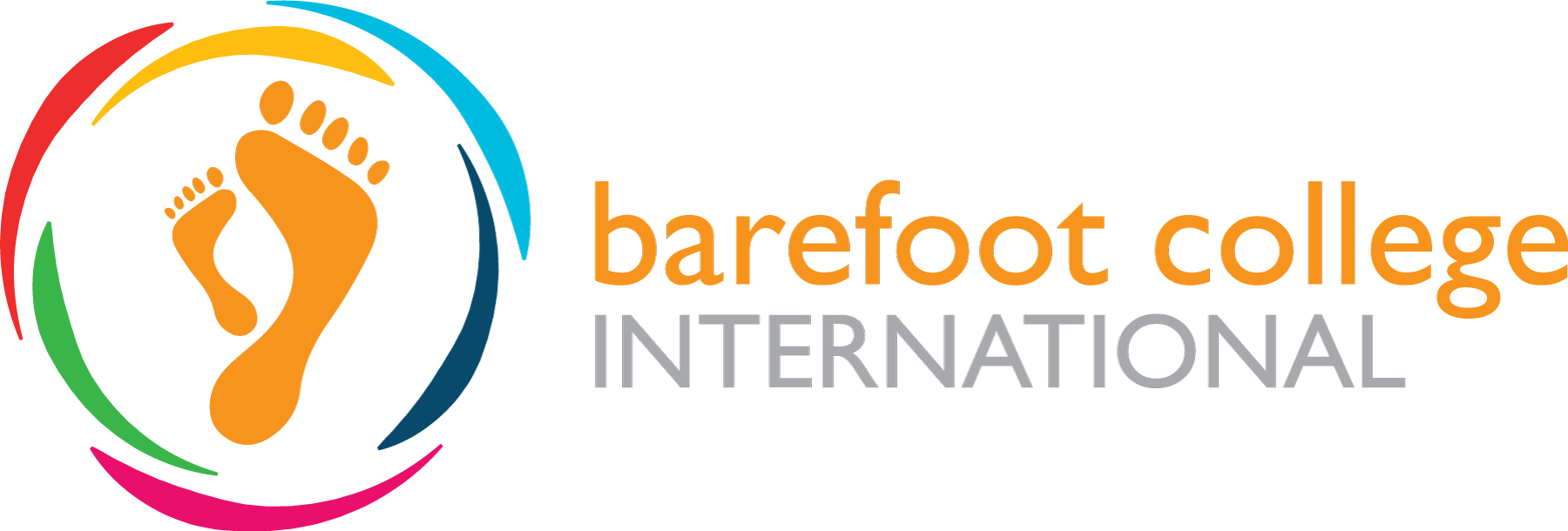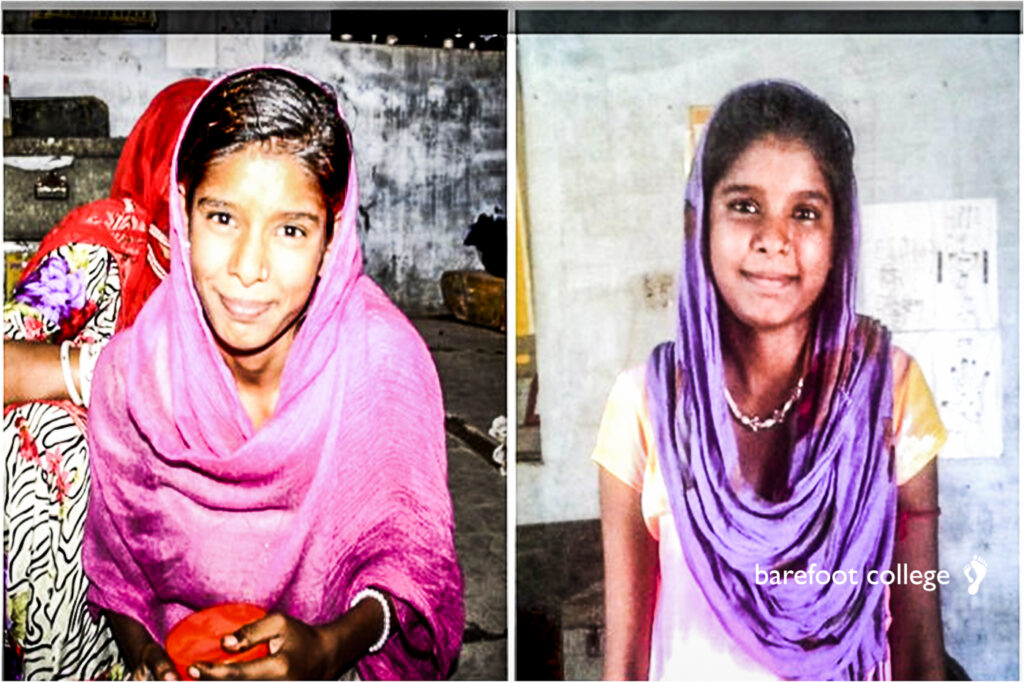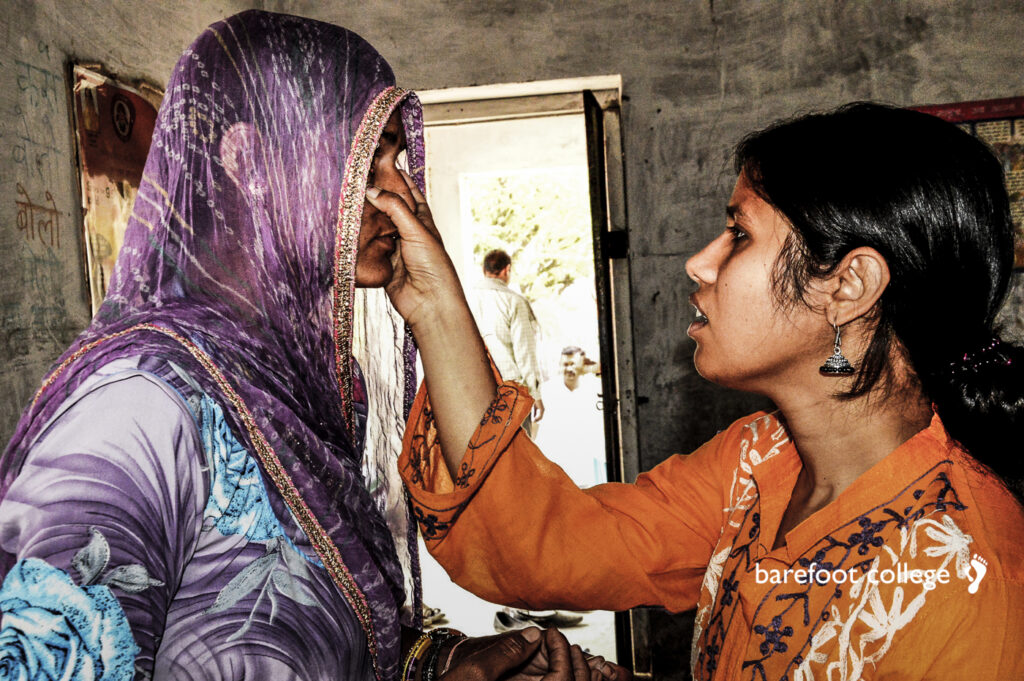
Working in 4 Rajasthani villages, resident SBI Fellow, Dr. Monalisa Padhee noticed a high prevalence of undernourishment, in particular anemia (lack of iron).
While GOI has dedicated programs to alleviate intergenerational cycles of poor health, Monalisa saw it to be non-existent in those regions of Rajasthan.
“To break the intergenerational cycle of poor health I decided to target women before and around the time of conception as they are the most crucial stages for embryogenesis, organogenesis and fetal development.”
– Dr. Monalisa Padhee
With no provisions for iron supplementation programs she sought out to provide a local product to alleviate anemia levels and in her quest found a solution that was right under our noses all along.
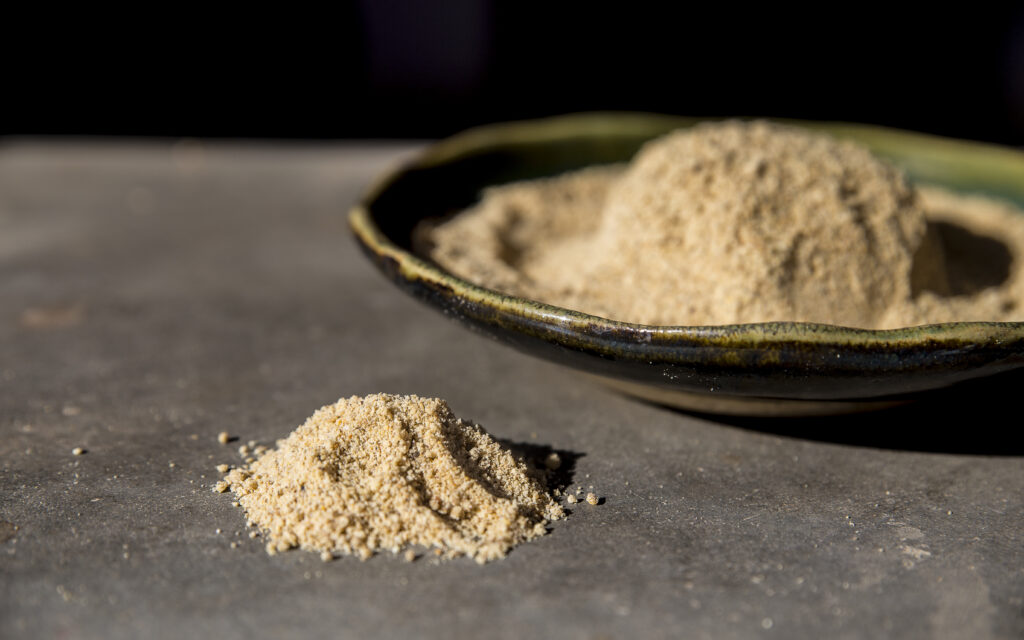
The Solution
The locals call it Amritchurna. With the help of Barefoot’s health coordinators, Meghraj Ji and Mangilal Ji, the team mobilized the community to uncover the necessary proportions of this indigenous product made of wheat – black gram – groundnut – sesame seed – jaggery.
Together they create a well balanced mix of carbohydrate, protein, calcium, magnesium and iron – the best part. All ingredients are locally available, affordable and most importantly, accepted by the community.

A simple packaging with graphical instructions on the dosage was adopted and distributed to more than 100 women and girls who were anemic.
Results
After consumption of Amritchurna for 4 months, many of the girls and women who were anemic saw increases in their haemoglobin levels by 2-3 gm/dL, a very encouraging discovery. Most physicians agree a woman’s natural haemoglobin level is between 12-14 gm/dL. So when Kripa came for a blood check-up resulting in 6gm/dL, naturally, the health team motivated her to take Amritchurna.
“Kripa came with her aunty and pregnant sister-in-law for the blood check-up camp. She looked very pale and thin and as expected she was severely anemic. After 1 month of regular intake, we went for the check-up again and were pleasantly surprised that her levels were increased to 9 gm/dL. I decided to redo her tests again and got the same result after conducting the test multiple times. This motivated her to take it every day and during the last check-up, the team couldn’t even recognize her. She looks healthy and had put on decent weight. Her haemoglobin level is now 10.6 gm/dL”
– Dr. Monalisa Padhee
before and after photo of Kripa
Challenges
Motivating a continual intake of Amritchurna becomes the biggest challenge and although most girls had increased haemoglobin levels, not many had transformations like Kripa. The comparison of how much it can benefit an individual is something difficult to predict and at times becomes the cause of dissent among beneficiaries.
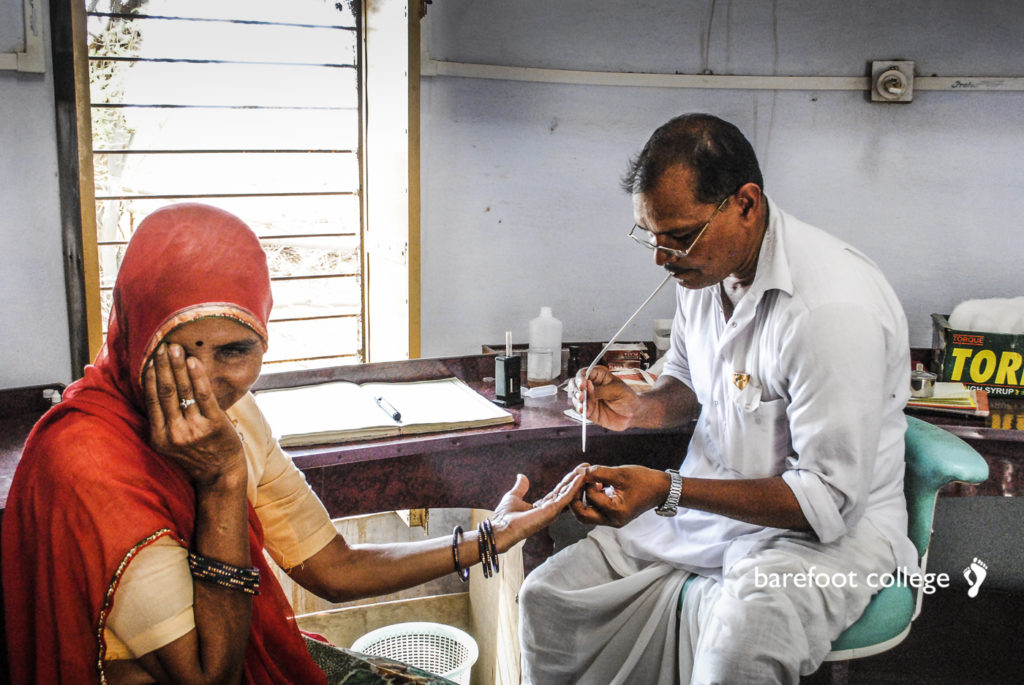 The health team conducted basic dioagnostics tests for nearly 200 girls and women and to identify haemoglobin levels
The health team conducted basic dioagnostics tests for nearly 200 girls and women and to identify haemoglobin levelsNow – Targeting 7 of the 17 UN SDGs
Addressing our patients should not only improve their individual health, but empower them with resources and knowledge.
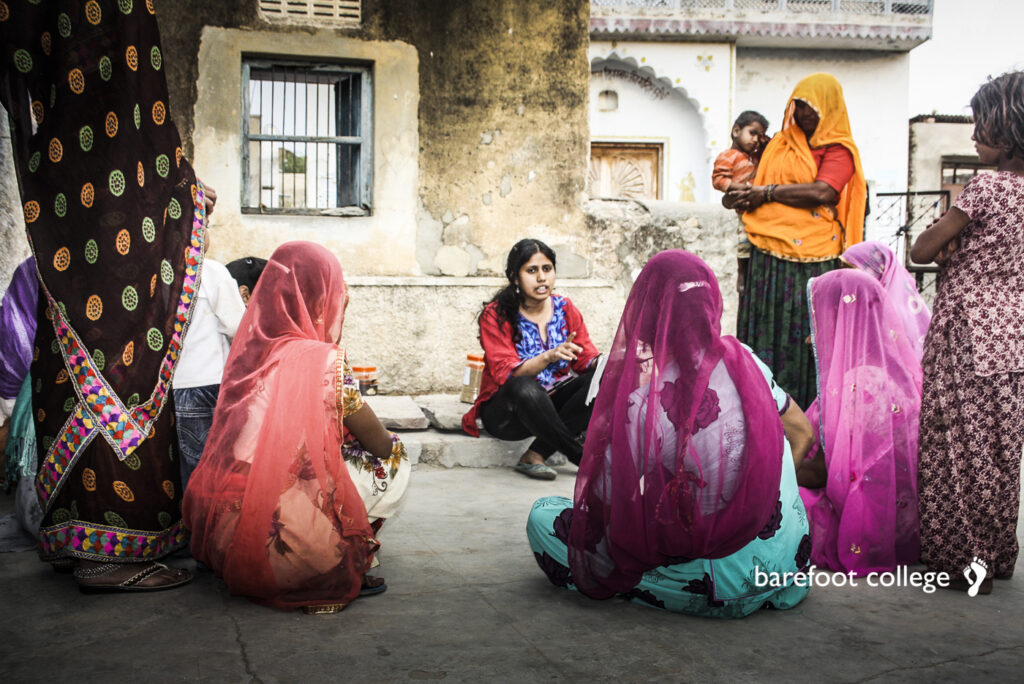
To further complement the remedy; awareness sessions on the prevalence of iron deficiency were also conducted to discuss why girls and women, in general, are more vulnerable to this deficiency as well as what this can mean to their long term health and to motivate patients to consume Amritchurna regularly.
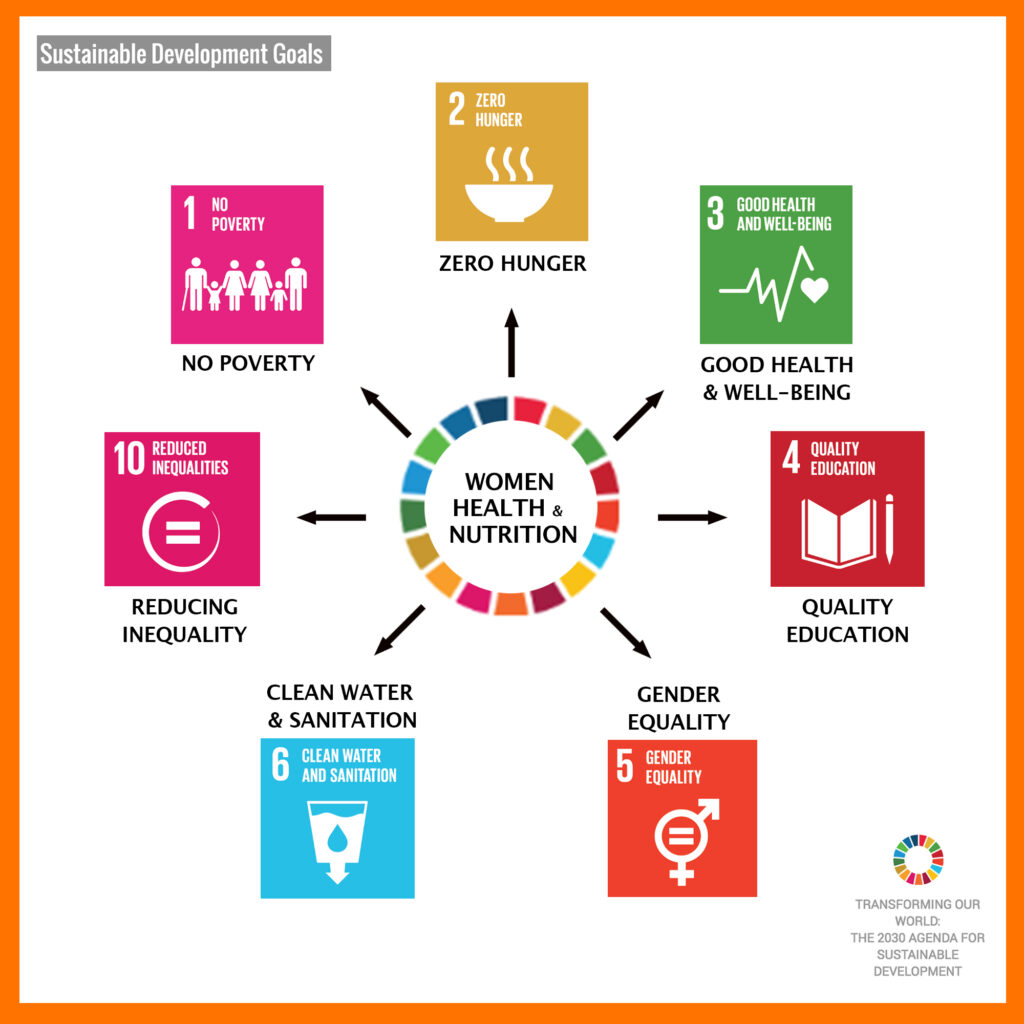
The project has warranted a highly focused plan on targeting a continuum care right from adolescence to lactation and beyond in order to achieve a progressive increase in the health status of the country.
When you Donate to Barefoot College
you enable this initiative and initiatives like this.
Amritchurna is the third of three interventions of Mona’s project “Breaking the inter-generational cycle of poor health in women” . Conducting awareness session and diagnostic medical camps have been briefly discussed in her previous blog posts.
